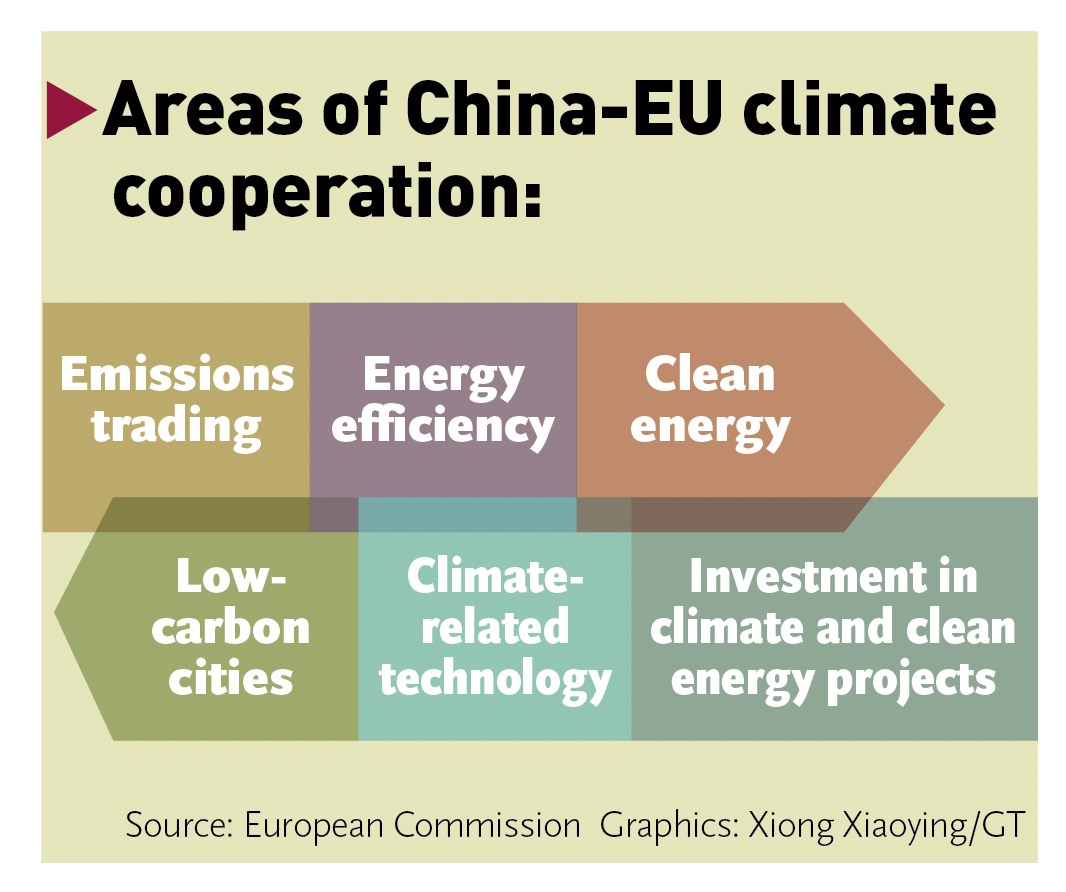China-Europe green cooperation highlighted at CIFTIS, as US disrupts climate efforts
Nation's climate investment to reach $38t by 2050, 'exceeds US'

CIFTIS highlights in Beijing. Photos: Li Hao/GT
China and Europe, two major stakeholders in global climate actions, share sufficient common ground ecologically to forge closer partnerships in green growth, officials and industry participants said on Thursday during the annual services trade fair in Beijing.
At the China-Europe Innovation Investment Conference during the 2022 China International Fair for Trade in Services (CIFTIS), officials and industry participants envisioned the twin global growth engines carving out a more viable road map to tackling climate change, especially as global climate efforts have been disrupted by several factors, including rising geopolitical tensions stirred up by the US.
"China's commitment to achieve its dual carbon goals creates the needed momentum to speed up global green growth and fundamentally change the dynamics of our joint efforts to tackle climate change," Marc Hubsch, Luxembourg's ambassador to China, said in remarks to the conference on Thursday.
"I stress joint efforts because climate change, biodiversity loss and environmental degradation are existential threats to Europe, China and the whole world… China and the EU have been pulling in the same direction, and the leadership that both China and the EU have shown in this area will further drive the growth of sustainable finance," the ambassador said.
There will be significant investment opportunities as regards ecological protection and the low-carbon transition, buoyed by a recent wave of market reforms that have triggered a gradual liberalization and internationalization of China's financial sector, he continued.
China and the EU have agreed to strengthen bilateral cooperation in many areas, including in emissions trading, clean energy, climate-related technology and investment in climate and clean energy projects, according to official documents and joint statements issued by the two sides.
At the same conference, Wang Yi, vice president of Renmin University of China, said that China's economic and trade ties with Europe have extended into high-end technological spheres including aviation, aerospace and biology.
The two sides are expected to explore collaborative potential in greenness and environmental protection, services trade, artificial intelligence, and digitalization, among other areas, thereby making greater contributions to world economic recovery, Wang remarked.
The 2030 peak carbon and 2060 carbon neutrality targets set off the low-carbon transition in full swing in China.
"In order to implement both objectives, a profound structural transformation is needed, not only in terms of upgrading the economic structure and managing the energy transition, but most notably, we will need to adopt coordinated measures to promote long-term, high-quality economic growth and social prosperity while at the same time protecting our environment," Hubsch stressed.
He cited extreme weather conditions unseen in six decades in some Chinese provinces and the worst drought in 500 years in Europe with nearly two-thirds of the land threatened by drought.

Areas of China-EU climate cooperation Graphic: GT
Addressing a sub-forum on environmental services and carbon peaking and neutrality economy at the CIFTIS on Thursday, Zhou Yuan, managing director and global senior partner at BCG, a consultancy, said that China has laid out a 30-year plan to be carbon neutral after it reaches peak carbon emissions by 2030, a speedy pledge especially in proportion to its economic size.
By comparison, the transition span in developed nations normally ranges from 40 to 70 years.
As the world's largest application market for green technologies, China will see its demand for fossil fuel plunge by 80 percent alongside the transition, per data from the consultancy.
Putting China's cumulative investment in climate initiatives at $38 trillion by 2050, BCG's Zhou noted that China's green commitment exceeds that of the US, which relies on tax cuts and exemptions and subsidies for infrastructure investment to push for lower-cost clean energy and technology applications.
China has a bigger market than the US and China's green investment outstrips that of the US also, Zhou said, voicing optimism on China's ability to blaze the trail in the dual carbon transition.
In a sign of the country's determination to strive for the carbon goals regardless of varied domestic and overseas issues clouding its economy, an environmental services section debuts at this year's CIFTIS.
The National Institute for Clean-and-Low-Carbon Energy (NICE), the research arm of China Energy, a first-time exhibitor at the CIFTIS, is among some 100 businesses and industry leading entities showcasing its activities at the environmental services section.
The institute's commercial partnerships and the commercialization of its research findings are mostly based within the country, Liu Gang, an engineer of the NICE, told the Global Times on the sidelines of the NICE's stall on Thursday.
Liu enumerated achievements in the building of hydrogen fueling stations and compressors for hydrogen refueling applications, among others that break foreign technological chokeholds. The institute has also been exploring opportunities in overseas markets.
Underscoring China-EU cooperation on climate change, in addition to its Beijing research and development (R&D) base, the NICE has a global R&D facility in Germany.



